Last Updated 4 weeks ago
Best Cities to Live in India – The “best” city to live in India depends on various factors, including personal preferences, career opportunities, lifestyle, and cultural preferences. India is a diverse country with cities that offer different experiences. Here are some cities that are often considered among the best to live in, taking into account factors such as infrastructure, job opportunities, quality of life, and cultural richness. The top five livable cities in India are- Bangalore, Mumbai, Delhi, Hyderabad, Chennai, Pune, Jaipur, Chandigarh, Ahmedabad, and Kolkata.

10 Best Cities to Live in India for 2025
Bangalore (Bengaluru)
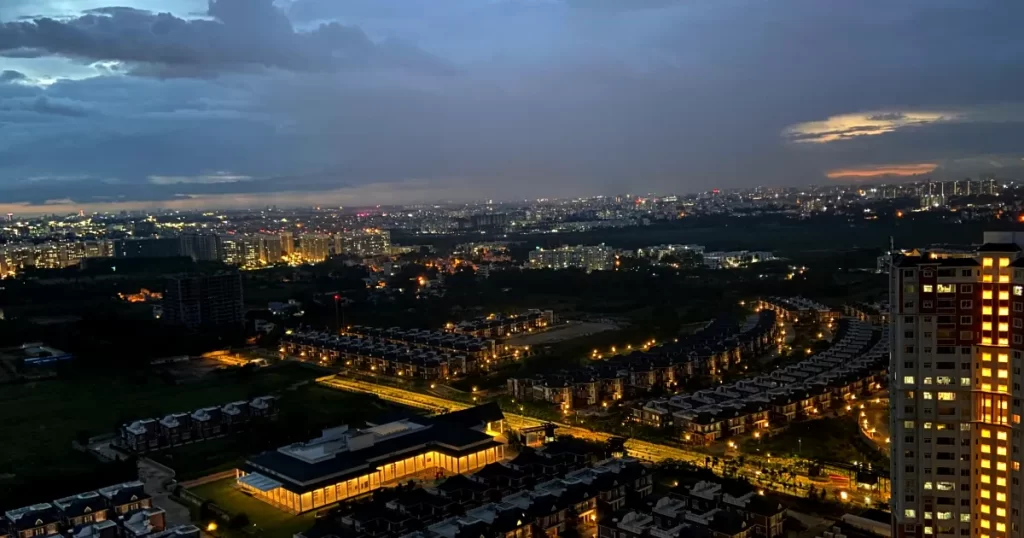
Known as the Silicon Valley of India, Bangalore is a major IT hub with a pleasant climate, vibrant culture, and a thriving job market. Bangalore, officially known as Bengaluru, is the capital city of the Indian state of Karnataka. Bengaluru holds the 1st position in the ranking of the best cities to live in India. Here are some key aspects and characteristics of Bangalore:
IT Hub
Bangalore is often referred to as the “Silicon Valley of India” due to its prominence as a major information technology (IT) and software hub. The city is home to numerous IT companies, multinational corporations, and tech parks.
Economic Hub
Apart from being a technology hub, Bangalore has a diverse economy that includes sectors such as aerospace, telecommunications, biotechnology, and manufacturing. It has a thriving startup ecosystem and is considered a major economic center in India.
Education and Research
The city is known for its prestigious educational institutions, research centers, and universities. Institutions like the Indian Institute of Science (IISc) and the Indian Institute of Management Bangalore (IIMB) contribute to Bangalore’s reputation as an education and research hub.
Pleasant Climate
Bangalore is known for its moderate and pleasant climate throughout the year. The city’s elevation contributes to cooler temperatures compared to many other Indian cities.
Garden City
Bangalore is often called the “Garden City of India” due to its numerous parks and gardens. Lalbagh Botanical Garden and Cubbon Park are popular green spaces in the city.
Cultural Diversity
The city is culturally diverse, with a mix of traditional and modern influences. It hosts various cultural events, music festivals, and art exhibitions. The presence of people from different parts of India and the world contributes to its cosmopolitan character.
Traffic and Infrastructure
Bangalore has faced challenges related to traffic congestion and infrastructure development due to rapid urbanization and population growth. Efforts have been made to improve public transportation and address these issues.
Multilingual Population
The city is home to people from various linguistic and cultural backgrounds. While Kannada is the official language, English, Hindi, Tamil, Telugu, and other languages are also commonly spoken.
Lively Food Scene
Bangalore offers a diverse and vibrant food scene with a wide range of restaurants, cafes, and street food options. The city is known for its culinary diversity.
Cosmopolitan Lifestyle
The city attracts a young and dynamic population, and it has a cosmopolitan lifestyle with a mix of modern amenities, shopping malls, and entertainment options.
While Bangalore has numerous positive aspects, it also faces challenges such as traffic congestion, rising costs of living, and infrastructure development. Overall, it remains one of the key cities in India, contributing significantly to the country’s economic and technological growth.
Mumbai
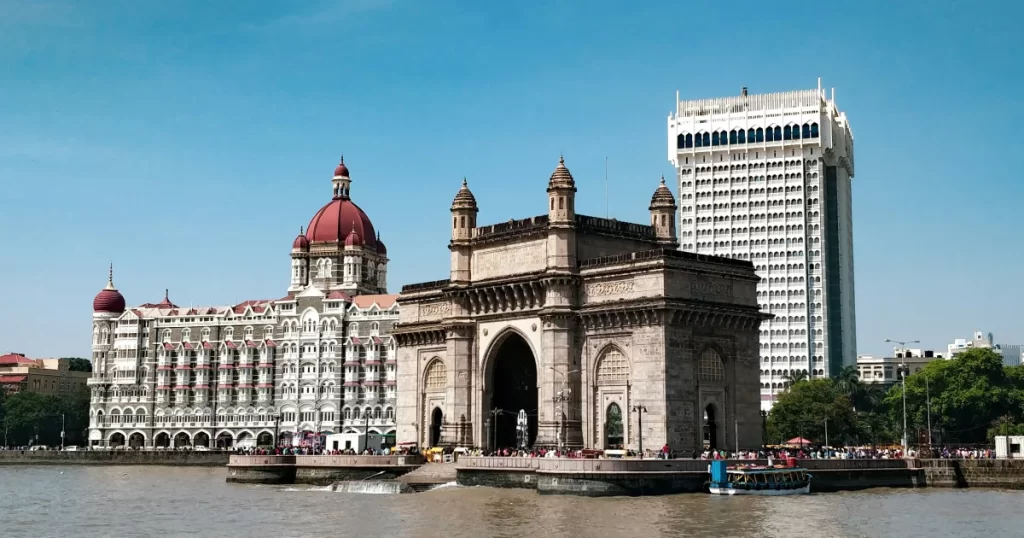
India’s financial capital, Mumbai is a bustling metropolis with a diverse culture, a vibrant nightlife, and numerous job opportunities in finance, entertainment, and more. Mumbai, formerly known as Bombay, is the capital city of the Indian state of Maharashtra.
Mumbai holds the 2nd position in the ranking of the best cities to live in India. It is the most populous city in India and is situated on the west coast of the country. Mumbai is not only a financial and economic powerhouse but also a cultural, entertainment, and industrial hub. Here are some key aspects and characteristics of Mumbai:
Financial Hub
Mumbai is the financial capital of India and is home to the Bombay Stock Exchange (BSE), Reserve Bank of India (RBI), and numerous financial institutions. The city is a major center for banking, finance, and commerce.
Economic Opportunities
Mumbai provides vast opportunities in various sectors, including the film industry (Bollywood), advertising, fashion, information technology, and services. The city attracts people from across the country seeking employment and business prospects.
Port City
Mumbai has one of the largest and busiest ports in India, contributing significantly to the country’s trade and commerce.
Bollywood
Mumbai is the center of the Indian film industry, commonly known as Bollywood. Many film studios, production houses, and the iconic Film City are located in and around the city.
Cultural Diversity
The city is known for its cultural diversity, with people from various linguistic, religious, and ethnic backgrounds. Mumbai celebrates various festivals with enthusiasm, and its multicultural atmosphere is reflected in its cuisine, traditions, and lifestyle.
Historical Landmarks
Mumbai has several historical landmarks, including the Gateway of India, Chhatrapati Shivaji Maharaj Terminus (formerly Victoria Terminus), Elephanta Caves, and the Chhatrapati Shivaji Maharaj Vastu Sangrahalaya (formerly Prince of Wales Museum).
Skyline and Infrastructure
The city has a striking skyline with a mix of modern skyscrapers and colonial-era architecture. Infrastructure includes extensive transportation networks, such as local trains, buses, and the Mumbai Metro.
Diverse Cuisine
Mumbai offers a diverse culinary scene, with street food vendors, local eateries, and upscale restaurants serving a variety of cuisines. Street food specialties like vada pav, pav bhaji, and bhel puri are popular among locals and visitors.
Local Train Network
Mumbai’s local train network is one of the busiest and most efficient in the world, serving millions of commuters daily. It is a lifeline for residents traveling within the city and its suburbs.
Challenges
Despite its economic prosperity, Mumbai faces challenges such as traffic congestion, inadequate public infrastructure, and housing issues. The city’s rapid urbanization has led to both opportunities and challenges.
Mumbai is a city that never sleeps, known for its vibrant energy, fast-paced lifestyle, and the juxtaposition of wealth and poverty. It plays a crucial role in shaping India’s economy, culture, and entertainment industry.
Delhi
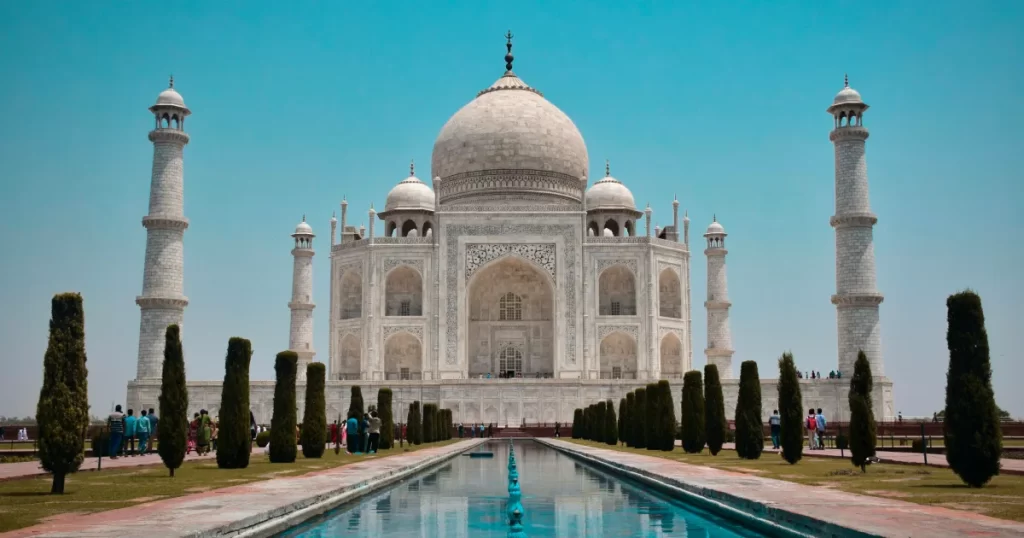
The national capital region offers a mix of historical charm and modern development. It has excellent educational institutions, cultural attractions, and career opportunities. Delhi, officially known as the National Capital Territory of Delhi (NCT), serves as the capital of India.
Delhi holds the 3rd position in the ranking of the best cities to live in India. It is a union territory with New Delhi as its seat of government. Delhi is known for its rich history, diverse culture, and status as a political, cultural, and economic hub. Here are some key aspects and characteristics of Delhi:
Historical Significance
Delhi has a history dating back thousands of years and has been a significant political and cultural center in various periods. It has been the capital of several empires, including the Maurya, Gupta, Mughal, and British Empires.
Government and Politics
As the capital of India, Delhi is the seat of the government and houses important political institutions, including the Parliament of India, the Rashtrapati Bhavan (Presidential Residence), and the Supreme Court.
Cultural Heritage
Delhi is home to numerous historical and cultural landmarks, including the Red Fort, Qutub Minar, Humayun’s Tomb, India Gate, Jama Masjid, and Lotus Temple. These landmarks reflect the city’s rich architectural and cultural heritage.
Diverse Population
Delhi has a diverse and cosmopolitan population, comprising people from various linguistic, religious, and cultural backgrounds. It is a melting pot of different traditions, languages, and cuisines.
Educational Institutions
Delhi is home to prestigious educational institutions, including the University of Delhi, Jawaharlal Nehru University (JNU), and the Indian Institutes of Technology (IIT Delhi).
Economic Hub
The city is a major economic center with a thriving business environment. It hosts corporate offices, financial institutions, and commercial centers, contributing significantly to the national economy.
Cuisine
Delhi is renowned for its diverse and delicious street food. From chaat and kebabs to parathas and sweets, the city offers a wide range of culinary delights.
Shopping Destinations
Delhi is a shopper’s paradise with markets and malls offering everything from traditional handicrafts to international brands. Popular shopping areas include Connaught Place, Sarojini Nagar, Chandni Chowk, and Dilli Haat.
Transportation
The city has an extensive transportation network, including the Delhi Metro, buses, auto-rickshaws, and cycle rickshaws. It serves as a major transportation hub with well-connected road and rail networks.
Challenges
Delhi faces challenges such as air pollution, traffic congestion, and issues related to urbanization. Efforts are ongoing to address environmental concerns and improve public infrastructure.
Delhi’s dynamic mix of historical charm and modern development makes it a city of contrasts. It remains a key player in shaping the cultural, political, and economic landscape of India. The city continues to evolve while preserving its historical identity.
Hyderabad
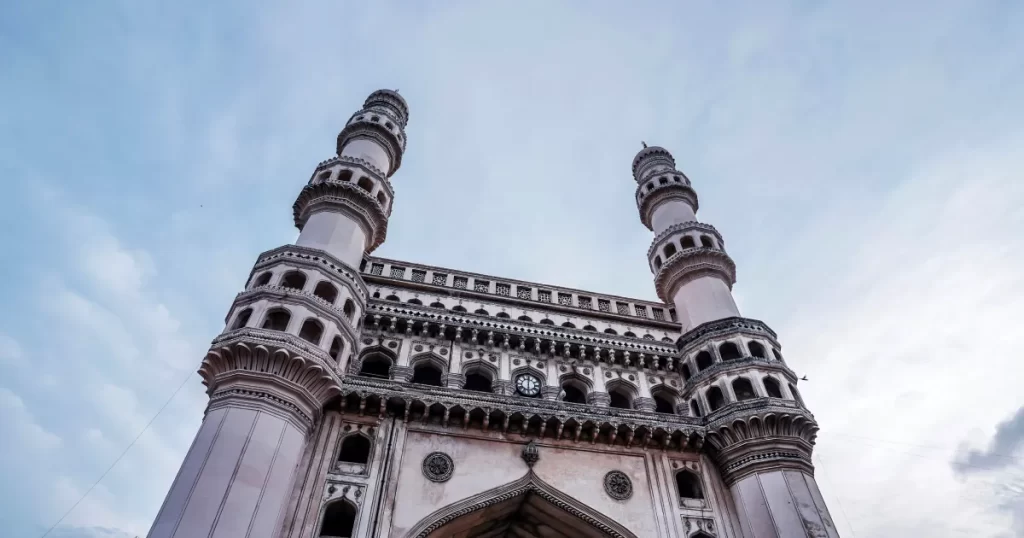
Known for its IT industry, Hyderabad also boasts a rich history, good infrastructure, and a relatively lower cost of living compared to other major cities. Hyderabad is a major city in southern India and serves as the capital of the Indian state of Telangana and the de jure capital of Andhra Pradesh.
Hyderabad holds the 4th position in the ranking of the best cities to live in India. Known for its rich history, cultural heritage, and economic significance, Hyderabad is a rapidly growing urban center. Here are some key aspects and characteristics of Hyderabad:
Historical Significance
Hyderabad has a storied history, having been established by Muhammad Quli Qutb Shah in 1591. It later became the capital of the Nizams, a dynasty that ruled the region for several centuries.
Cultural Heritage
The city is known for its cultural diversity and historical monuments. The Charminar, Golconda Fort, Qutb Shahi Tombs, and Chowmohallah Palace are some of the iconic landmarks that showcase the city’s architectural and cultural richness.
Economic Hub
Hyderabad has emerged as a major economic and technological hub, earning it the nickname “Cyberabad.” It houses HITEC City (Hyderabad Information Technology and Engineering Consultancy City), a hub for IT companies, startups, and multinational corporations.
Information Technology
Hyderabad is a significant player in the Indian IT industry, hosting numerous tech parks and headquarters of major IT companies. The city has witnessed substantial growth in the information technology and business process outsourcing (BPO) sectors.
Education
Hyderabad is home to several prominent educational institutions, including Osmania University, the Indian School of Business (ISB), and the International Institute of Information Technology (IIIT).
Cuisine
The city is famous for its delectable cuisine, which includes Hyderabadi Biryani, Haleem, and various traditional sweets. The culinary culture reflects a blend of Mughal, Turkish, and Arabic influences.
Language and Culture
Telugu and Urdu are the principal languages spoken in Hyderabad. The city’s culture is a vibrant mix of traditional and modern influences, with festivals, music, and dance playing a significant role.
Film Industry
Hyderabad is a major center for the Telugu film industry, often referred to as Tollywood. The Ramoji Film City, one of the largest film studio complexes in the world, is located in Hyderabad.
Global Business Hub
Apart from the IT sector, Hyderabad has a growing presence in industries such as pharmaceuticals, biotechnology, and aerospace. The Genome Valley in Hyderabad is a major biotech and life sciences cluster.
Public Infrastructure
The city has a well-developed infrastructure, including the Hyderabad Metro, extensive road networks, and the Rajiv Gandhi International Airport. The “Tank Bund” area around Hussain Sagar Lake is a popular recreational space.
While Hyderabad embraces modernization and economic growth, it also cherishes its historical legacy and cultural heritage. The city’s dynamic blend of tradition and innovation makes it a significant and influential urban center in India.
Chennai
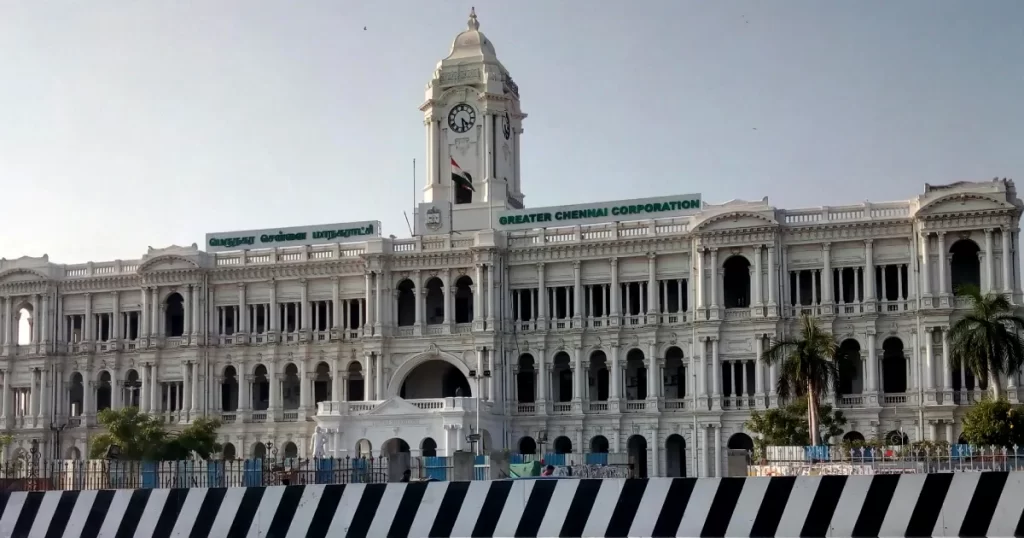
A major economic and cultural hub in South India, Chennai is known for its educational institutions, healthcare facilities, and a growing IT sector. Chennai, formerly known as Madras, is the capital city of the Indian state of Tamil Nadu.
Chennai holds the 5th position in the ranking of the best cities to live in India. It is situated on the Coromandel Coast of the Bay of Bengal and is one of the major cultural, economic, and educational centers in southern India. Here are some key aspects and characteristics of Chennai:
Cultural Heritage
Chennai is known for its rich cultural heritage, classical arts, and traditional music and dance forms. The city is a hub for Carnatic music, Bharatanatyam (classical dance), and various other cultural events.
Historical Landmarks
Chennai has several historical landmarks, including the Fort St. George, which is the first English fortress in India, the Kapaleeshwarar Temple, San Thome Basilica, and the Government Museum. The city’s architecture reflects a mix of colonial and Dravidian styles.
Educational Institutions
Chennai is home to prestigious educational institutions such as the University of Madras, Indian Institute of Technology Madras (IIT Madras), and Loyola College. The city has a strong presence in the education and research sectors.
Economic Hub
Chennai is a significant economic center, with a diverse industrial base that includes the automobile, information technology, manufacturing, and healthcare sectors. The city is often referred to as the “Detroit of India” due to its automobile industry.
IT and Software Industry
The city has a growing IT and software industry, with the Tidel Park and the IT Corridor (Rajiv Gandhi Salai) serving as major IT hubs. Many multinational IT companies have a presence in Chennai.
Marina Beach
Marina Beach, one of the longest urban beaches in the world, is a popular recreational spot for residents and visitors. The beach offers a scenic view of the Bay of Bengal and is a common location for cultural events and gatherings.
Cuisine
Chennai is known for its diverse and flavorful cuisine. South Indian dishes like dosa, idli, and sambar are staples, and the city also offers a wide range of seafood delicacies.
Film Industry
Chennai is a major center for the Tamil film industry, also known as Kollywood. The city hosts film studios, production houses, and theaters, contributing significantly to the Indian film scene.
Language
Tamil is the official language of Chennai, and the majority of the population speaks Tamil. However, English is widely used and understood, especially in educational and business environments.
Transportation
Chennai has a well-developed transportation network, including the Chennai Metro, suburban railway, and an extensive bus system. The Chennai International Airport serves as a major aviation hub.
Chennai, with its blend of tradition and modernity, has a distinct identity and plays a crucial role in the economic and cultural landscape of South India. The city’s welcoming atmosphere, educational institutions, and economic opportunities make it a vibrant and dynamic urban center.
Pune
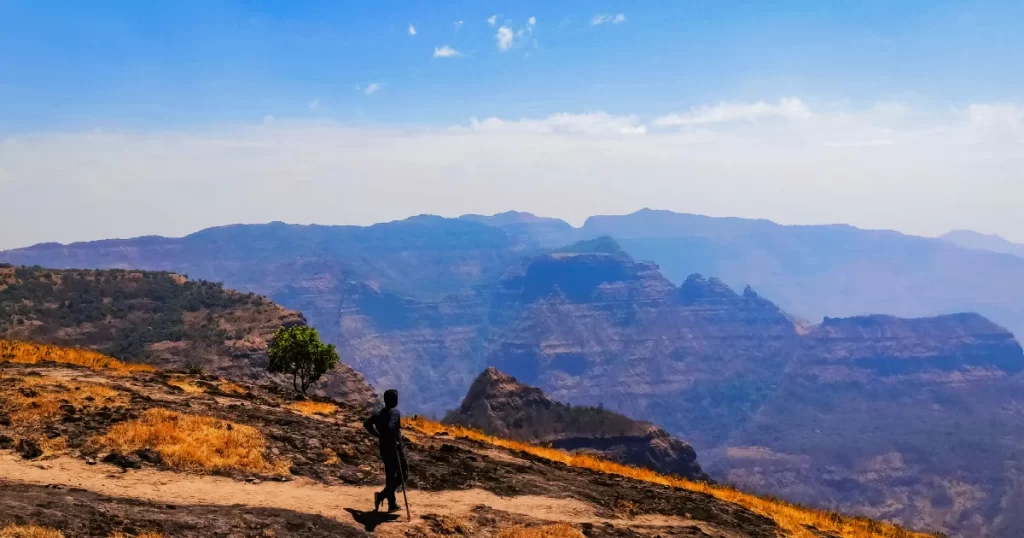
Pune, often referred to as the “Oxford of the East” due to its educational institutions, is a city in the state of Maharashtra, India. It is the second-largest city in the state and serves as a major hub for education, technology, and manufacturing. Pune holds the 6th position in the ranking of the best cities to live in India. Here are some key aspects and characteristics of Pune:
Educational Hub
Pune is known for its numerous educational institutions and is home to some of India’s top universities and colleges. Institutions like Savitribai Phule Pune University, Symbiosis International University, and the Indian Institute of Science Education and Research (IISER) contribute to the city’s reputation as an educational hub.
IT and Technology
Pune has a growing IT and technology sector, with various IT parks and software companies establishing their presence in the city. The Hinjawadi IT Park is a major IT hub, hosting a multitude of tech companies.
Automobile Manufacturing
The city is a significant center for the automotive industry, hosting manufacturing plants of major automobile companies such as Tata Motors, Bajaj Auto, and Mercedes-Benz.
Cultural Heritage
Pune has a rich historical and cultural heritage. The Aga Khan Palace, Shaniwar Wada, and the Osho International Meditation Resort are notable landmarks that reflect the city’s history and culture.
Weather
Pune is known for its moderate climate. It experiences a tropical wet and dry climate, with relatively mild temperatures compared to some other Indian cities.
Cuisine
Pune offers a diverse culinary scene, blending traditional Maharashtrian cuisine with influences from other regions. The city is known for its street food, Maharashtrian thali, and a variety of sweets.
Green Spaces
Pune is surrounded by hills and has several green spaces, providing opportunities for trekking, nature walks, and outdoor activities. The nearby Western Ghats offer scenic landscapes and trekking trails.
Oxford of the East
Pune earned the nickname “Oxford of the East” due to the presence of several prestigious educational institutions, creating a conducive environment for learning and research.
Cultural Events
Pune hosts various cultural events and festivals throughout the year. The Ganesh Chaturthi festival is celebrated with great enthusiasm, and the city is known for its vibrant cultural scene.
Quality of Life
Pune is often recognized for its comparatively better quality of life. The city offers a balance between urban development and a more relaxed lifestyle, making it attractive to residents.
Pune’s dynamic blend of education, technology, and culture makes it a significant city in India. It attracts students, professionals, and those seeking a combination of career opportunities and a high quality of life.
Jaipur
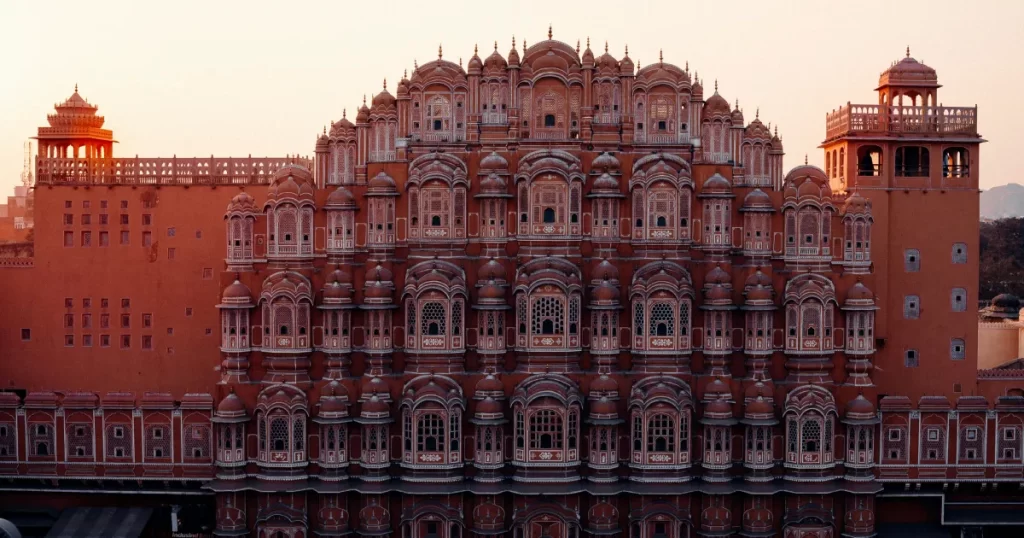
Jaipur, the capital city of the Indian state of Rajasthan, is known for its rich history, vibrant culture, stunning architecture and a growing focus on tourism and hospitality. . Often referred to as the “Pink City” due to the color of its buildings, Jaipur is a popular tourist destination and a significant cultural and economic center in the region.
Jaipur holds the 7th position in the ranking of the best cities to live in India. Here are some key aspects and characteristics of Jaipur:
Historical Significance
Jaipur was founded in 1727 by Maharaja Sawai Jai Singh II and was designed by the architect Vidyadhar Bhattacharya according to Vastu Shastra principles. The city has a rich history, with numerous palaces, forts, and monuments reflecting its royal heritage.
Architecture
The architecture of Jaipur is a mix of Rajput and Mughal styles. Notable landmarks include the Hawa Mahal (Palace of Winds), City Palace, Amer Fort, Jantar Mantar (an astronomical observatory), and Jal Mahal (Water Palace).
City Planning
Jaipur is known for its well-planned layout, with wide streets, gardens, and distinctive buildings. The city is divided into sectors, each known as a “chowk,” with its own unique character.
Colorful Markets
Jaipur is famous for its bustling markets, where you can find traditional Rajasthani handicrafts, textiles, jewelry, and souvenirs. The Johari Bazaar and Tripolia Bazaar are popular shopping destinations.
Festivals
The city celebrates various festivals with enthusiasm, including Diwali, Holi, and the Teej festival. The Elephant Festival and the Jaipur Literature Festival are also significant cultural events.
Cultural Heritage
Jaipur is a hub of traditional arts and crafts. The city is known for its miniature paintings, block printing, blue pottery, and traditional Rajasthani jewelry.
Palatial Hotels
Jaipur boasts several palatial hotels that were once royal residences. These heritage hotels offer a luxurious experience, allowing guests to immerse themselves in the city’s royal history.
Educational Institutions
Jaipur is home to several educational institutions, including the University of Rajasthan and the Malaviya National Institute of Technology (MNIT).
Culinary Delights
The city offers a variety of Rajasthani cuisine, known for its rich flavors and spices. Popular dishes include dal baati churma, gatte ki sabzi, and kachori.
Tourist Attractions
In addition to the historical sites mentioned earlier, Jaipur is a gateway to other tourist destinations in Rajasthan, such as Jodhpur, Udaipur, and Jaisalmer.
Jaipur’s vibrant culture, historical significance, and architectural splendor make it a must-visit destination for travelers seeking a glimpse into India’s royal past. The city’s unique blend of tradition and modernity contributes to its charm and allure.
Chandigarh
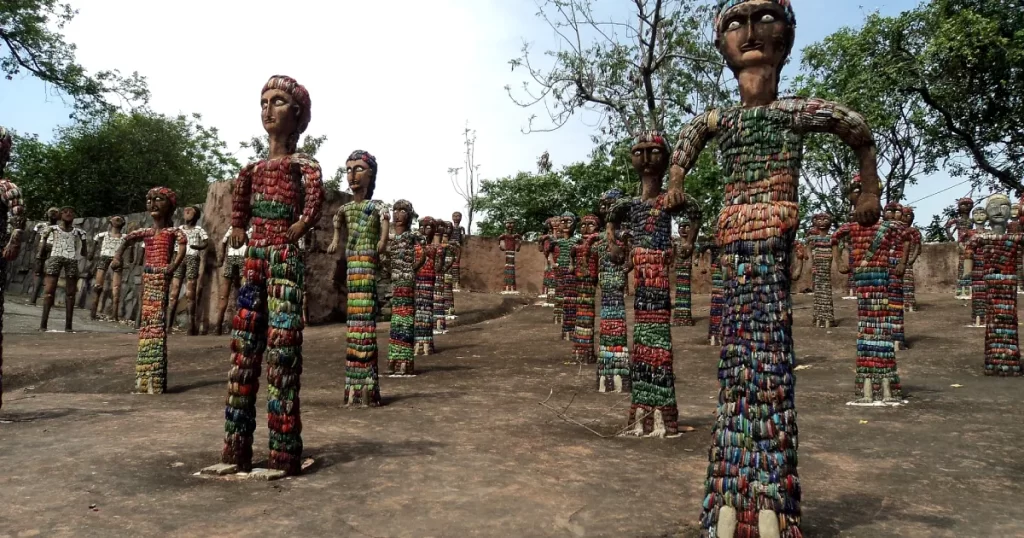
Chandigarh is a Union Territory and the capital of two Indian states, Punjab and Haryana. It is one of the well-planned cities in India and serves as a Union Territory under the direct administration of the Government of India.
Chandigarh holds the 8th position in the ranking of the best cities to live in India. Chandigarh was designed by the renowned architect Le Corbusier and is known for its modernist architecture, organized layout, and high standard of living. Here are some key aspects and characteristics of Chandigarh:
City Planning
Chandigarh is known for its meticulous urban planning, which is based on a grid pattern with sectors, each designed to serve specific purposes like residential, commercial, and recreational. The city is divided into sectors, and each sector is self-sufficient with its own markets, schools, and healthcare facilities.
Architecture
The city’s architecture reflects the modernist principles of Le Corbusier. The Capitol Complex, including the Legislative Assembly, High Court, and Secretariat, is a UNESCO World Heritage Site. Other notable structures include the Open Hand Monument and the Rock Garden, an artistic creation made entirely from industrial & home waste and thrown-away items.
Quality of Life
Chandigarh consistently ranks high in terms of quality of life. It is known for its green spaces, clean environment, and well-maintained infrastructure. The city has a high standard of living and is considered one of the best places to live in India.
Education
Chandigarh has several educational institutions, including Panjab University, Punjab Engineering College, and Government Medical College and Hospital. These institutions contribute to the city’s educational excellence.
Cultural Events
Chandigarh hosts various cultural events and festivals throughout the year. The Rose Festival, Chandigarh Carnival, and Chandigarh Literature Festival are among the notable events.
Gardens and Parks
The city is adorned with numerous gardens and parks. The Rock Garden, Zakir Hussain Rose Garden (Asia’s largest rose garden), and Sukhna Lake are popular recreational spots for residents and tourists.
Government Institutions
Chandigarh serves as the capital of both Punjab and Haryana. It houses the offices of the governments of both states, as well as the Punjab and Haryana High Court.
Shopping and Entertainment
The city has vibrant markets and shopping areas, including Sector 17 Plaza, Elante Mall, and Chandigarh Haat. These places offer a mix of traditional and modern shopping experiences.
Clean and Green
Chandigarh is often praised for its cleanliness and greenery. The city’s well-maintained parks, tree-lined avenues, and efficient waste management contribute to its clean and green environment.
Transportation
The city has a well-organized transportation system, with wide roads and well-connected public transport. The Chandigarh International Airport facilitates air travel, and the city is well-connected by road to nearby regions.
Chandigarh stands out as a unique city that blends modern urban planning with a focus on greenery and quality of life. Its aesthetic appeal, cultural vibrancy, and efficient administration make it a distinctive and attractive place to live and visit.
Ahmedabad
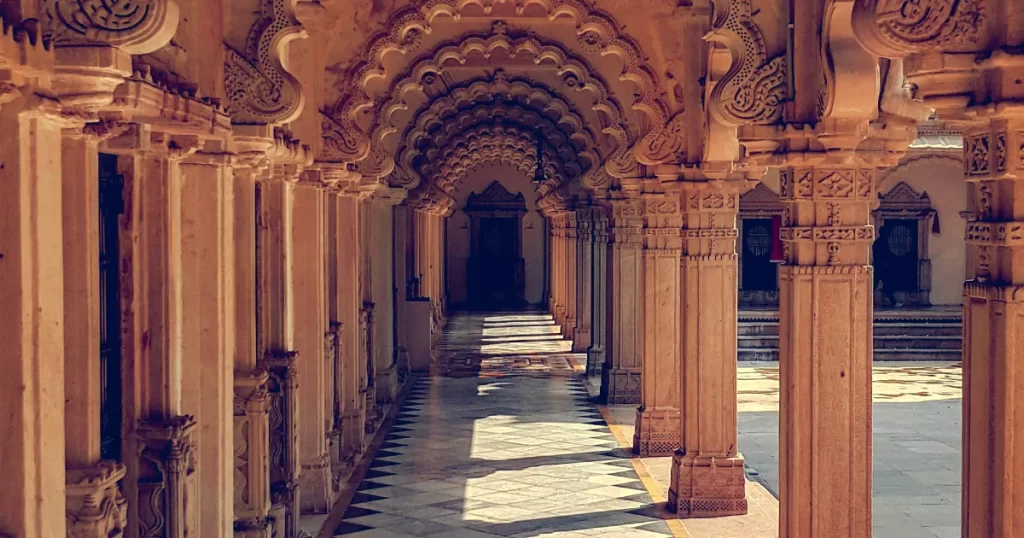
Ahmedabad is a major city in the state of Gujarat, India, and it serves as the largest city and the former capital of the state. It is an important economic and industrial hub with a rich historical and cultural heritage. Ahmedabad holds the 9th position in the ranking of the best cities to live in India. Here are some key aspects and characteristics of Ahmedabad:
Historical Significance
Ahmedabad has a deep historical significance, with roots dating back to the 15th century when it was founded by Sultan Ahmed Shah. The city has been witness to various historical events, including the Indian independence movement led by Mahatma Gandhi.
Mahatma Gandhi’s Sabarmati Ashram
Ahmedabad played a pivotal role in India’s struggle for independence, and Mahatma Gandhi established the Sabarmati Ashram on the banks of the Sabarmati River. The ashram served as Gandhi’s residence and the center of the freedom movement.
Architectural Heritage
The city boasts a mix of traditional and modern architecture. The Jama Masjid, Sidi Saiyyed Mosque, and Sarkhej Roza are examples of historical architecture, while contemporary structures like the Sabarmati Riverfront and the IIM Ahmedabad campus showcase modern design.
Textile Industry
Ahmedabad is renowned for its textile industry and has been historically known as the “Manchester of the East.” The city’s textile mills played a significant role in India’s industrialization.
Economic Hub
In addition to textiles, Ahmedabad is a major economic and industrial hub with diverse industries such as chemicals, pharmaceuticals, engineering, and information technology. The city is home to several industrial estates and business parks.
Gujarat’s Commercial Capital
Ahmedabad is considered the commercial capital of Gujarat. The city has a vibrant business environment and hosts various trade and commerce activities.
Education
Ahmedabad is home to prestigious educational institutions, including the Indian Institute of Management Ahmedabad (IIM-A), National Institute of Design (NID), and Gujarat University.
Cultural Diversity
The city is known for its cultural diversity, with a mix of Hindu, Muslim, and Jain communities. Ahmedabad celebrates various festivals, and the International Kite Festival held annually is a colorful and popular event.
Cuisine
Ahmedabad offers a diverse culinary experience. The city is famous for its street food, including snacks like dhokla, khandvi, and fafda. The Gujarati thali, a traditional meal with an assortment of dishes, is a popular choice.
Sabarmati Riverfront
The Sabarmati Riverfront project transformed the banks of the Sabarmati River into a well-planned recreational and commercial space. It includes parks, promenades, and cultural venues, contributing to the city’s development.
Ahmedabad’s blend of historical significance, economic prowess, and cultural richness makes it a dynamic city with a unique identity. It has played a crucial role in India’s history and continues to be a key player in the country’s economic and cultural landscape.
Kolkata
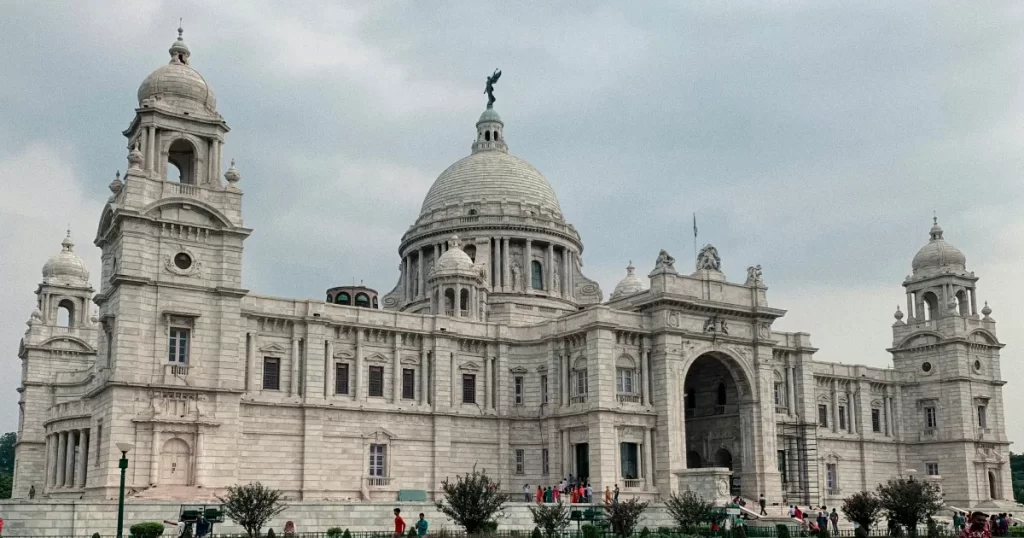
Kolkata, formerly known as Calcutta, is the capital city of the Indian state of West Bengal. It is one of the major cultural, educational, and commercial centers in eastern India. Kolkata holds the 10th position in the ranking of the best cities to live in India. Here are some key aspects and characteristics of Kolkata:
Historical Significance
Kolkata has a rich historical heritage and was the capital of British India until 1911. The city played a crucial role in the Indian independence movement, and landmarks such as the Victoria Memorial and Howrah Bridge are reflective of its colonial past.
Cultural Hub
Kolkata is often regarded as the cultural capital of India. It is home to numerous theaters, art galleries, museums, and cultural festivals. The city has produced renowned poets, writers, filmmakers, and artists.
Literary Heritage
Kolkata has a strong literary tradition and is associated with iconic figures like Rabindranath Tagore, who became the first non-European Nobel laureate in Literature. The city hosts the Kolkata Literary Meet and the International Kolkata Book Fair.
Durga Puja
The Durga Puja festival is one of the most significant and grand celebrations in Kolkata. The city comes alive with elaborate decorations, artistic displays, and cultural events during this festive season.
Educational Institutions
Kolkata is home to prestigious educational institutions, including the University of Calcutta, Jadavpur University, Presidency University, and the Indian Statistical Institute. The city has a strong academic heritage.
Cuisine
Kolkata is known for its diverse and delectable cuisine. Street food like kathi rolls, phuchka (pani puri), and sweets such as rasgulla and sandesh are popular. The city is also famous for its traditional Bengali cuisine.
Howrah Bridge
The Howrah Bridge is an iconic symbol of Kolkata. Built over the Hooghly River, it is one of the busiest and most recognized bridges in the world.
Art and Culture
Kolkata has a thriving arts and culture scene. The city hosts cultural events, music festivals, and art exhibitions throughout the year. The Academy of Fine Arts and Nandan, the film and cultural complex, are notable cultural institutions.
Economic Activities
Kolkata is an important economic hub, with a mix of industries including manufacturing, finance, and information technology. The city’s strategic location near the Bay of Bengal contributes to its economic significance.
Tram Network
Kolkata is known for its historic tram network, one of the oldest in Asia. The trams add to the city’s charm and provide a unique mode of transportation.
While Kolkata has a rich cultural and historical legacy, it also faces challenges such as traffic congestion, urbanization, and infrastructure development. The city’s unique blend of tradition and modernity makes it a fascinating and vibrant metropolis.
It’s essential to consider your personal preferences, career goals, and lifestyle when choosing the best city to live in. Additionally, factors such as cost of living, climate, and social amenities should be taken into account based on individual priorities.
Best Cities to Live in India for Students
Choosing the best city to live in India for students depends on various factors, including the availability of educational institutions, quality of life, cost of living, and cultural opportunities. Here are some cities that are often considered favorable for students:
- Bangalore (Bengaluru) – Known as the Silicon Valley of India, Bangalore is a major IT hub with a thriving startup culture. It hosts prestigious educational institutions and offers a vibrant lifestyle with a mix of technology and cultural events.
- Pune – Pune is known for its educational institutions, including universities and engineering colleges. The city has a youthful vibe, a moderate climate, and a growing IT sector, making it a popular choice for students.
- Hyderabad – Hyderabad has a strong presence in the IT and technology sectors. It is home to reputable universities, research centers, and a relatively lower cost of living compared to some other major cities.
- Chennai – Chennai is known for its academic excellence, with institutions like the Indian Institute of Technology Madras (IIT-M) and Anna University. The city has a rich cultural heritage and offers a comfortable lifestyle.
- Mumbai – Mumbai is the financial capital of India and hosts several prestigious universities and colleges. It provides students with exposure to diverse career opportunities and a vibrant cultural scene.
- Delhi – The national capital region, including New Delhi, offers a mix of educational institutions, cultural diversity, and career opportunities. Delhi is known for its historical landmarks, museums, and thriving student community.
- Kolkata – Kolkata is renowned for its literary and cultural heritage. The city has prestigious educational institutions and a relatively lower cost of living, making it an attractive option for students.
- Coimbatore – Coimbatore, located in Tamil Nadu, has a growing educational sector and is known for its engineering and technology institutions. It provides a peaceful environment with a focus on education.
- Jaipur – Jaipur offers a blend of historical charm and modern amenities. The city has educational institutions, a lower cost of living, and a vibrant cultural scene.
- Ahmedabad – Ahmedabad is an educational and industrial hub with reputable institutes. The city offers a good quality of life, and its relatively lower living costs make it attractive for students.
When choosing a city, students should consider factors such as the reputation of educational institutions, availability of courses, cost of living, safety, and cultural and recreational opportunities. Additionally, personal preferences and career goals play a crucial role in determining the best city for an individual student.
FAQ’s Related to Best Cities to Live in India
Which is the No. 1 City to Live in India?
The “No. 1 City to Live in India” is subjective and depends on individual preferences and priorities. Different people may have different criteria for what makes a city the best place to live. Factors such as job opportunities, climate, cost of living, cultural amenities, healthcare facilities, and overall quality of life contribute to the appeal of a city.
As of my last knowledge update in January 2022, cities like Bangalore, Pune, and Hyderabad were often considered among the best cities to live in due to their growing economies, job opportunities, and overall quality of life. However, opinions may vary, and new developments may have occurred since then.
It’s advisable to conduct up-to-date research, consider your personal preferences and priorities, and perhaps visit different cities to make an informed decision based on your specific needs and lifestyle. Keep in mind that what might be the best city for one person may not be the same for another, as individual preferences play a significant role in this decision.
Which City in India is Best for Lifestyle?
The best city in India for lifestyle depends on individual preferences and priorities. Lifestyle preferences can vary widely, and what might be ideal for one person may not suit another. However, certain cities are often praised for offering a good balance of various lifestyle factors. Here are a few cities in India that are frequently considered for their lifestyle offerings:
- Mumbai – Known for its fast-paced life, cultural diversity, and vibrant nightlife, Mumbai is the financial and entertainment capital of India. It offers a mix of career opportunities, entertainment, and cultural experiences.
- Bangalore (Bengaluru) – Often referred to as the “Silicon Valley of India,” Bangalore has a pleasant climate, a cosmopolitan culture, and a thriving IT industry. It’s known for its lively pub culture and green spaces.
- Goa – If a relaxed and beach-oriented lifestyle is what you seek, Goa might be an excellent choice. It’s a popular destination for its beautiful beaches, vibrant nightlife, and laid-back atmosphere.
- Chandigarh – Known for its well-planned architecture, Chandigarh offers a high quality of life. The city has green spaces, modern infrastructure, and a relatively calm lifestyle compared to other major cities.
- Pune – Often considered a student-friendly city with a youthful vibe, Pune has a pleasant climate, cultural events, and a growing IT industry. It provides a mix of urban and suburban lifestyles.
- Hyderabad – Known for its rich history, Hyderabad offers a blend of modern amenities and historical charm. The city has a diverse culinary scene and a growing IT sector.
- Jaipur – The capital of Rajasthan, Jaipur, is known for its cultural heritage, historic architecture, and a relatively slower pace of life. It’s a city where tradition meets modernity.
- Kochi – Located in Kerala, Kochi is known for its serene backwaters, cultural festivals, and a laid-back lifestyle. It offers a unique blend of modernity and tradition.
Ultimately, the best city for lifestyle will depend on your personal preferences, career goals, and the type of environment you find most suitable. It’s advisable to visit different cities, consider your priorities, and assess the lifestyle factors that matter most to you before making a decision.
Which is the Cheapest City in India?
Cheapest city in India depends on various factors, including the cost of living, housing prices, and overall affordability. As of my last knowledge update in January 2022, certain cities were often considered more affordable compared to others. Keep in mind that economic conditions can change, and it’s essential to consider the latest information. As of my last update:
- Patna – The capital of Bihar, Patna, was considered one of the more affordable cities in terms of the cost of living.
- Lucknow – The capital of Uttar Pradesh, Lucknow, was known for its lower cost of living compared to some major metropolitan areas.
- Jaipur – The capital of Rajasthan, Jaipur, was often considered affordable, especially in terms of housing.
- Kolkata – Kolkata, in West Bengal, was known for its relatively lower cost of living compared to cities like Mumbai and Delhi.
- Bhubaneswar – The capital of Odisha, Bhubaneswar, was considered affordable with a reasonable cost of living.
- Chandigarh – While it’s a planned city and offers good amenities, Chandigarh has been known for its relatively lower cost of living compared to some other major cities.
Affordability can vary based on individual lifestyle choices, and these rankings may have changed since my last update. It’s advisable to check the latest cost of living indices and consider factors such as housing, transportation, food, and healthcare when evaluating the affordability of a city. Additionally, the perception of affordability can vary from person to person based on individual preferences and needs.
Which City is Very Clean in India?
As of my last knowledge update in January 2022, several cities in India have made efforts to improve cleanliness and sanitation. The Swachh Bharat Abhiyan (Clean India Mission) launched by the government has aimed to make cities and towns across the country cleaner. Keep in mind that the status of cleanliness in cities can change, and it’s advisable to check the latest reports for the most up-to-date information. As of my last update:
- Indore – Indore in Madhya Pradesh has consistently ranked high in cleanliness surveys and has been recognized for its efforts in waste management and cleanliness.
- Ambikapur – Ambikapur in Chhattisgarh has been praised for its waste management practices and cleanliness initiatives.
- Mysuru (Mysore) – Mysuru in Karnataka has often been ranked among the cleanest cities in India and has won the Swachh Survekshan awards multiple times.
- Chandrapur – Chandrapur in Maharashtra has been recognized for its cleanliness efforts, especially in waste management.
- Khargone – Khargone in Madhya Pradesh has made progress in maintaining cleanliness and proper sanitation.
It’s important to note that cleanliness rankings can change, and cities across India continue to work towards improving their sanitation infrastructure. The Swachh Sarvekshan, an annual cleanliness survey conducted by the Government of India, provides updated information on the cleanliness status of cities. It’s advisable to refer to the latest reports and surveys for the most accurate and current information on clean cities in India.
Which City is Very Safest in India?
Safety is a complex and multifaceted aspect, and determining the safest city in India can be subjective. Various factors contribute to the overall safety of a city, including crime rates, law enforcement effectiveness, infrastructure, and public services. It’s important to note that safety conditions can change, and perceptions of safety can vary among individuals. As of my last knowledge update in January 2022, certain cities in India were often considered relatively safe:
- Chandigarh – Chandigarh, as a well-planned city, has been perceived as relatively safe with lower crime rates compared to some other urban areas.
- Ahmedabad – Ahmedabad in Gujarat has been recognized for its efforts in improving law and order, contributing to a sense of safety.
- Mysuru (Mysore) – Mysuru in Karnataka has been known for its low crime rates and efforts to maintain public safety.
- Thiruvananthapuram – The capital city of Kerala, Thiruvananthapuram, has been considered relatively safe, with a focus on public security.
- Pune – Pune in Maharashtra has often been viewed as safer compared to some larger cities, with a lower crime rate.
It’s crucial to keep in mind that safety perceptions and conditions can change over time. Additionally, safety is a subjective matter, and personal experiences may vary. It’s recommended to check the latest crime statistics, government reports, and travel advisories for the most up-to-date and accurate information on the safety of cities in India. Local law enforcement agencies and official government sources are valuable resources for understanding the current safety situation in a particular city.
Which City is Very Costly in India?
As of my last knowledge update in January 2022, several cities in India were known for having a higher cost of living compared to others. However, it’s important to note that the cost of living can be subjective and depends on individual lifestyle choices, housing preferences, and spending habits. Additionally, economic conditions can change over time, so it’s advisable to check the latest data for the most up-to-date information. As of my last update, the following cities were often considered relatively expensive:
- Mumbai – As the financial capital of India, Mumbai is known for its high cost of living, particularly in terms of housing, transportation, and entertainment.
- Delhi – The national capital region, including New Delhi, can be relatively expensive, especially in terms of housing and certain upscale neighborhoods.
- Bangalore (Bengaluru) – Due to its status as a major IT hub and the demand for housing in certain areas, Bangalore has experienced a rise in the cost of living.
- Chennai – Chennai, with its growing economy and urban development, has witnessed an increase in the cost of living, particularly in certain neighborhoods.
- Hyderabad – While Hyderabad is often considered more affordable than some other major cities, certain areas may have a higher cost of living, particularly due to the growth in the IT sector.
- Pune – Pune, with its thriving IT industry and educational institutions, has experienced an increase in the cost of living, especially in certain neighborhoods.
It’s essential to consider factors such as housing, transportation, healthcare, education, and lifestyle when assessing the overall cost of living in a city. Individuals may have different perceptions of what is considered expensive based on their personal circumstances and priorities. Additionally, economic conditions and rankings can change, so it’s advisable to consult the latest reports and surveys for the most current information on the costliest cities in India.
Which State is Best for Living in India?
The best state for living in India is subjective and depends on individual preferences, priorities, and lifestyle choices. Each state in India has its unique characteristics, and what might be ideal for one person may not suit another. Here are a few states that are often considered attractive for various reasons:
- Kerala – Known as “God’s Own Country,” Kerala is celebrated for its natural beauty, a high standard of living, and a strong focus on healthcare and education. The state is known for its backwaters, beaches, and lush green landscapes.
- Maharashtra – Home to the bustling city of Mumbai, Maharashtra is a economically significant state with diverse opportunities. Mumbai, the financial capital, attracts people from various backgrounds and professions.
- Karnataka – The state is known for its capital city, Bangalore (Bengaluru), which is a major IT hub. Karnataka offers a mix of urban development, cultural richness, and pleasant weather in certain regions.
- Tamil Nadu – With its rich cultural heritage, Tamil Nadu is known for cities like Chennai and its historical sites. The state offers a blend of modernity and tradition.
- Himachal Pradesh – Known for its scenic beauty and hill stations, Himachal Pradesh provides a peaceful and picturesque environment. Cities like Shimla and Manali are popular tourist destinations.
- Gujarat – Gujarat is known for its vibrant cities like Ahmedabad and Surat. The state has a strong industrial base and is known for its entrepreneurial spirit.
- Punjab – Known for its fertile land and agriculture, Punjab offers a unique blend of tradition and economic development. Cities like Chandigarh are known for their planned layout.
- Goa – Renowned for its beautiful beaches and laid-back lifestyle, Goa is a popular destination for those seeking a relaxed environment.
It’s crucial to consider various factors such as job opportunities, climate, cost of living, healthcare, education, and cultural preferences when determining the best state for living. Additionally, personal preferences and priorities play a significant role in making such decisions. Before making a decision, individuals should thoroughly research and may even visit different states to understand their unique characteristics and choose the one that aligns with their lifestyle goals.


